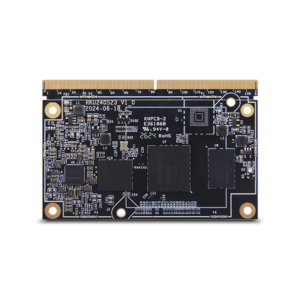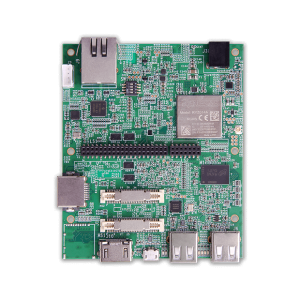Maximizing Efficiency in Embedded Systems with Computer-on-Modules
Maximizing Efficiency in Embedded Systems with Computer-on-Modules
Blog Article
Accelerating Product Development with Versatile Computer-on-Modules
In the present fast-paced technological landscape, businesses and developers are increasingly looking at modular answers to meet up the ever-growing demands of high-performance applications. One such solution increasing footing is the usage of arm computer on module. These small, self-contained techniques are stuffed with all the current crucial aspects of a pc, like the processor, storage, storage, and connectivity interfaces, all built-into just one unit. In this information, we explore why Computer-on-Modules are learning to be a go-to choice for scalable, high-performance applications across numerous industries.

1. Lightweight Style and Integration
One of the major benefits of COMs is their small sort factor. These adventures are made to combine all critical components of some type of computer, lowering the necessity for numerous discrete areas and which makes it easier to produce lightweight, space-efficient systems. That integration enables developers to construct effective alternatives without reducing the entire measurement of the end solution, which is very beneficial in industries such as stuck methods, IoT products, and industrial automation.
2. Scalability for Diverse Applications
Scalability is a crucial factor for contemporary applications, particularly in industries like telecommunications, automotive, and edge computing. With Computer-on-Modules, businesses can quickly degree up or down with regards to the specific efficiency and source requirements of the projects. For example, a business developing an edge processing option will start with a component that fits basic needs and then upgrade to more powerful segments since the workload or control needs grow. This versatility enables companies to future-proof their investments and align electronics with evolving performance demands.
3. High-Performance Computing
Many high-performance purposes need a robust computational backbone to take care of challenging tasks such as for instance real-time information control, movie analytics, or machine learning. COMs are typically made with powerful processors, high-speed interfaces, and sufficient storage, creating them capable of delivering the high throughput and low-latency efficiency necessary for these applications. Furthermore, their capacity to guide the latest processor architectures guarantees that techniques may keep at the forefront of efficiency benchmarks.
4. Cost Performance and Time Savings
Still another significant advantageous asset of using Computer-on-Modules is cost efficiency. Considering that the modules come pre-integrated with essential parts, developers save yourself both time and resources that will otherwise be spent on designing, testing, and building individual components. This will lead to paid off growth cycles and a faster time-to-market for products and services, that is critical in aggressive industries. Moreover, since the hardware components are standardized, the risk of incompatibility is decreased, ultimately causing softer growth procedures and lower executive costs.
5. Variable Customization
While COMs give you a large level of integration, they're also designed for flexibility. Several COMs come with numerous choices for I/O interfaces, memory designs, and power management answers, allowing designers to tailor the component to the precise needs of their application. This versatility is particularly useful in industries where modification is key, such as for example medical products, robotics, and automotive applications.

Realization
In conclusion, Computer-on-Modules provide numerous benefits for businesses and designers seeking to produce scalable, high-performance solutions. Their small design, scalability, strong processing capabilities, cost-efficiency, and modification possibilities make sure they are an ideal selection for a wide selection of applications. As industries continue to evolve and need stronger, variable alternatives, COMs may truly perform a vital role in shaping the ongoing future of technology. Report this page